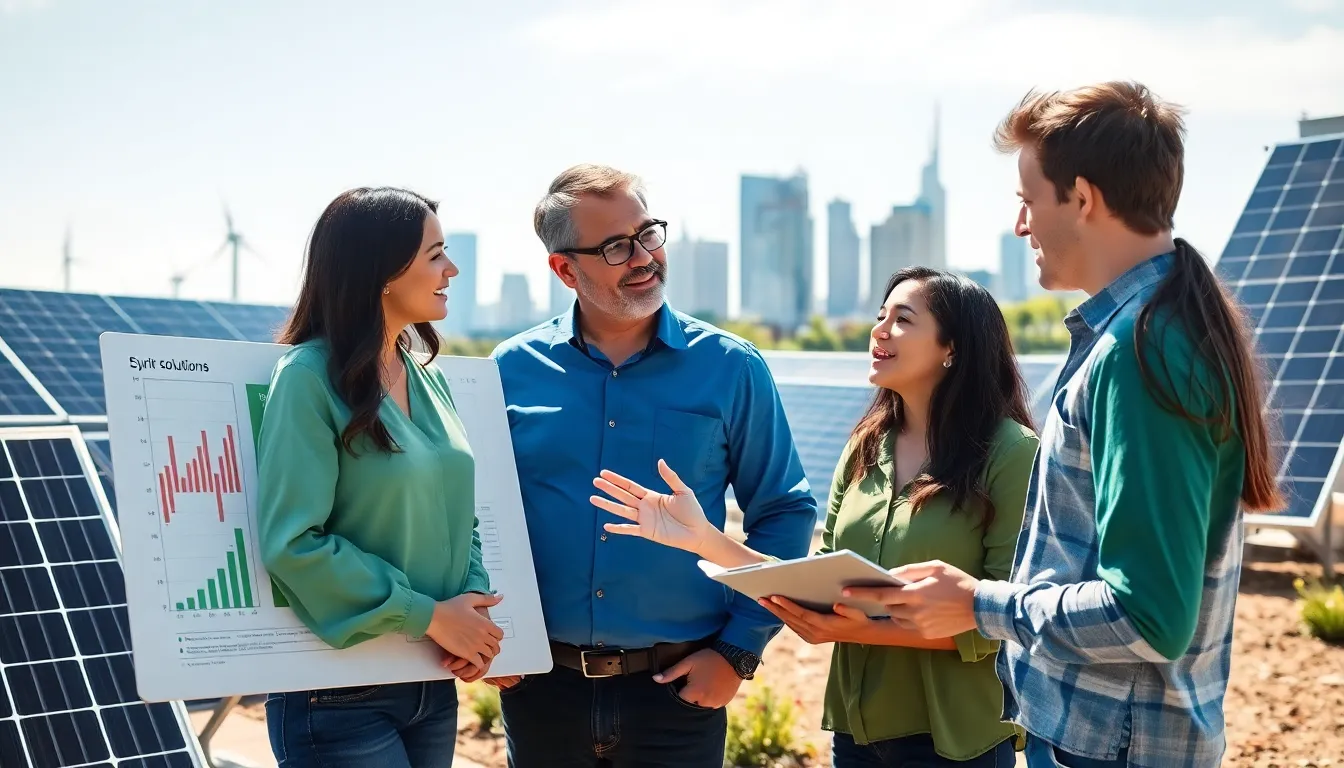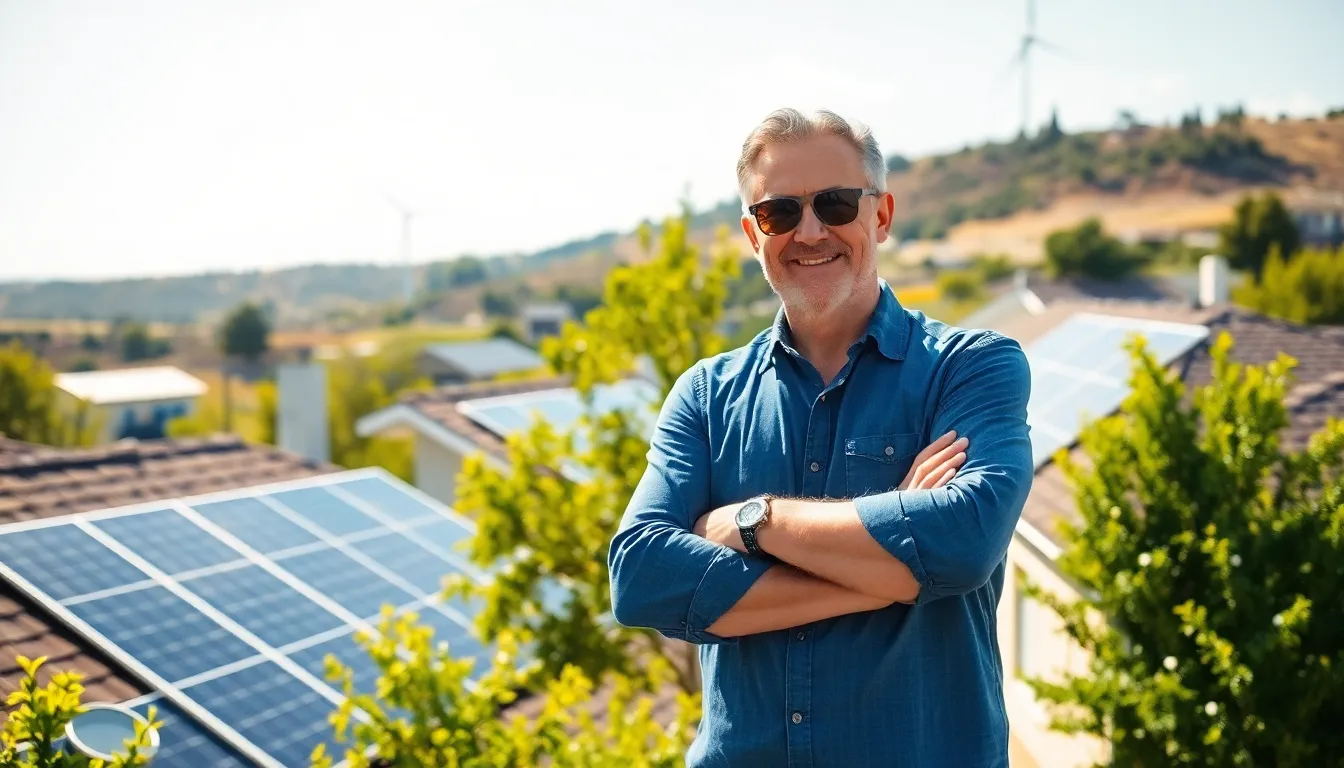In an age where energy efficiency and sustainability are no longer luxuries but necessities, understanding various power solutions has become essential. Lotsofpower.net serves as an invaluable resource for individuals and businesses seeking comprehensive insights into the vast world of energy options. This guide will investigate into the intricacies of power solutions, popular types, environmental impacts, and the unique features that Lotsofpower.net offers to help users make informed decisions.
Table of Contents
ToggleUnderstanding Power Solutions

Power solutions encompass a broad range of technologies and resources aimed at harnessing, generating, or optimizing energy use. From traditional sources like fossil fuels to renewable alternatives such as solar and wind energy, the landscape of power solutions is diverse and evolving.
Energy efficiency plays a crucial role in power solutions. It involves using less energy to achieve the same outcome, which not only reduces costs but also minimizes environmental impact. Understanding how these solutions work can help individuals and businesses leverage them effectively.
Popular Types of Power Solutions
Several popular types of power solutions cater to different energy needs and goals:
1. Solar Power
Solar power has gained significant traction in recent years. Photovoltaic panels convert sunlight into electricity, providing a renewable source of energy for homes and businesses. With decreasing installation costs and government incentives, solar power is accessible to a wider audience.
2. Wind Energy
Harnessing the power of wind through turbines is another popular solution. Wind farms dot many landscapes, converting kinetic energy into electrical energy. It is particularly effective in areas with steady wind patterns.
3. Hydropower
Hydropower uses flowing water to generate electricity. This method is prevalent in regions with rivers and streams, making it a stable power source that can supply large amounts of energy.
4. Biomass
Biomass energy involves using organic materials to generate power. Whether through direct combustion or conversion into biofuels, it’s a renewable solution that reduces waste while producing energy.
5. Geothermal Energy
Geothermal power taps into the Earth’s heat. This reliable energy source can provide heating, cooling, and electricity, especially in geologically active areas.
Each type of power solution comes with its own advantages and considerations, making it essential for users to understand their options.
Choosing the Right Power Solution for Your Needs
Selecting the ideal power solution involves several factors, including energy needs, budget, and long-term goals. Here are some key considerations:
1. Energy Requirements
Determine how much power you need based on your lifestyle or business operations. Larger energy demands may require a combination of multiple power solutions.
2. Initial and Recurring Costs
Evaluate both upfront costs and ongoing expenses. While some solutions might be more expensive to carry out initially, they could save money in the long run through lower utility bills.
3. Availability and Location
Local resources significantly impact the feasibility of various power solutions. For instance, solar panels require ample sunlight, while wind turbines benefit from consistent winds.
4. Environmental Impact
Consider how each energy source affects the environment. Renewable options generally offer lower carbon footprints compared to fossil fuels, contributing to sustainability goals.
5. Incentives and Regulations
Research any state or federal incentives for implementing energy-efficient solutions. These can significantly reduce overall costs and enhance the return on investment.
How Lotsofpower.net Stands Out
Lotsofpower.net distinguishes itself as a comprehensive resource for power solutions by offering:
1. Detailed Guides and Articles
The website features in-depth articles on various power solutions, providing users with valuable information and insights, helping them understand complex topics easily.
2. User-Friendly Interface
Navigating Lotsofpower.net is intuitive, allowing users to find relevant information quickly. The site is optimized for mobile and desktop users alike, ensuring accessibility for everyone.
3. Expert Insights
The site collaborates with energy experts to deliver up-to-date information and forecasts about power solutions, guiding users toward the best practices and innovations in the field.
4. Community Engagement
Lotsofpower.net encourages user interaction through forums and comment sections, fostering a vibrant community where users can share experiences, tips, and resources.
Environmental Impact of Power Solutions
Understanding the environmental implications of power solutions is critical in today’s context of climate change and ecological awareness. Renewable energy sources, such as solar, wind, and hydropower, significantly reduce greenhouse gas emissions compared to traditional fossil fuels. Here are some key points to consider:
1. Carbon Footprint Reduction
Transitioning to renewable energy sources lowers the carbon footprint, contributing to global efforts to combat climate change.
2. Land and Water Use
While renewables are cleaner, they still require land and water resources. For example, solar farms occupy substantial land, and hydropower plants can affect local ecosystems. Understanding these trade-offs is essential for responsible implementation.
3. Sustainability
Sustainable practices in energy generation, such as recycling materials and preserving local habitats, enhance the overall environmental benefits of power solutions.
Future Trends in Power Solutions
The landscape of power solutions is continually evolving. Several trends are shaping the future:
1. Increased Use of Energy Storage
As renewable sources become more prevalent, energy storage systems, like batteries, are gaining importance. These systems allow users to store excess energy generated from renewables for later use.
2. Smart Grid Technology
Smart grids are transforming energy distribution by utilizing technology to manage electricity demand and supply efficiently. This innovation enables better integration of renewables into the energy mix.
3. Decentralized Power Generation
Microgrids and decentralized energy solutions empower communities to produce their own power. This shift promotes energy independence and resilience against outages.
4. Policy Advances
Government policies will continue to drive the adoption of green technologies. Incentives, regulations, and international agreements will shape the path toward sustainable energy solutions.
Conclusion
Navigating the world of power solutions can be daunting, but resources like Lotsofpower.net simplify the process. By understanding various types of power solutions, evaluating specific needs, and staying informed about environmental impacts and future trends, individuals and businesses can make educated decisions. As society moves towards a more sustainable future, leveraging comprehensive platforms like Lotsofpower.net will prove invaluable in finding the right energy solutions.





